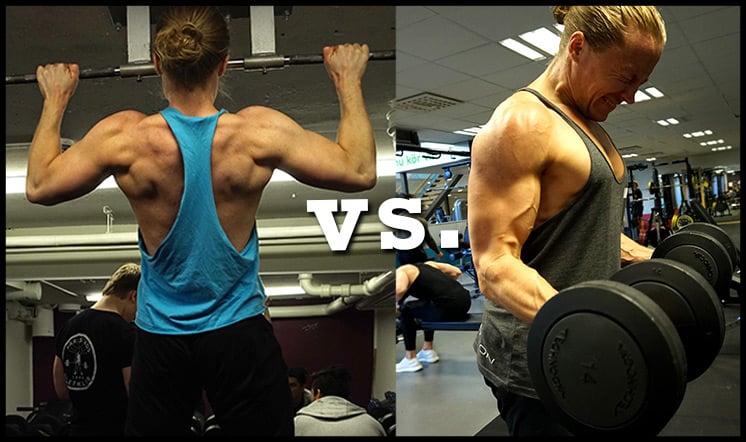
Do you agree with me when I say:
It’s a freaking jungle out there when it comes to picking exercises for the purpose of building muscle.
On one side you have the tribe who swears that you must train with big compound exercises like squats, bench presses and rows if your goal is to build muscle. You can also check out the best fitness websites and see a similar debate.
While on the other side you have the tribe who swears that it doesn’t matter which exercises you choose, you can just pick whichever ones you like, including isolation exercises, if your goal is muscle growth.
So, who’s right?
Well, that’s exactly what I’m going to sort out in this post. First I’ll give you some insights into how exercise selection influence muscle growth, then I’ll give you some recommendations of good exercises to choose.
Let’s go!
Table of Contents
How Exercise Selection Influence Muscle Growth
In order to know what the best exercises are for building muscle, we must first understand how the exercises we choose should influence muscle growth.
And here’s my attempt of a one sentence breakdown of this:
“A good exercise for muscle growth is one that can overload the muscle/muscles you intend to train in the most effective, efficient and safe way possible.”
As you can see, this has fairly little to do with what exercise you choose, and more so to do with that the exercise you choose allows for effective, efficient and safe overload (fatiguing of the muscle) to happen.
In other words, all exercises work, where one exercise isn’t necessarily better than another for muscle growth directly. But, there are certain exercises that are more effective, efficient and safe, and hence that makes them a better choice.
So with that said, what are the best exercises that causes effective, efficient and safe overload to take place?
Compound Exercises: The Bread And Butter For Effective and Efficient Muscle Growth
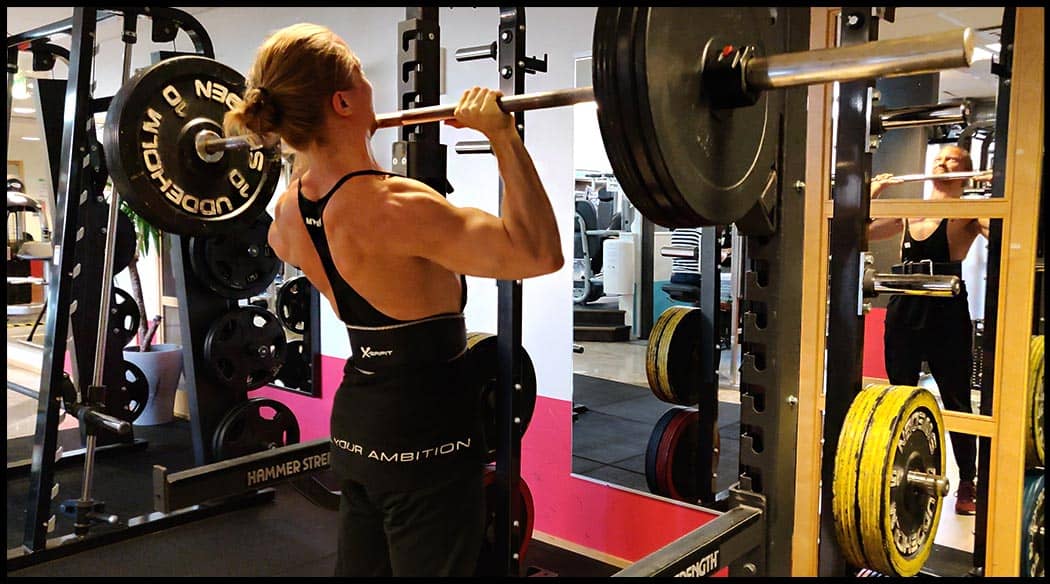
Training almost exclusively with big compound lifts is hands down the most effective and efficient way to build a great looking lean and muscular physique.
It’s been shown repeatedly that nothing beats the effectiveness of doing compound lifts for strength and physique development.
This is because:
- You can lift the most amount of weight with compound lifts, which places large amounts of tension on your muscles in less time.
- Compound exercises effectively develop the body as one and put tension on very large parts of the body simultaneously.
- Compound exercises allows you to go through a range of motion that is very natural to the body. Which is good for avoiding injury.
You see, by doing exercises like bench presses, overhead presses, pull-ups, rows, deadlifts and squats you will stress your whole body as one and get the largest stimulus for growth of your entire body with the least time invested.
Doing tons of smaller isolation exercises, like flyes, front raises, facepulls etc. will only serve as “junk volume.” Meaning, if you were to do only isolation exercises you would still see results, just less of it and for much more time invested.
Another very important reasons to use big compound exercises, is to create a physique that’s symmetrical and proportional.
As I just mentioned, by doing large compound lifts, you make sure your body gets developed as one, and this is crucial when building your physique, especially during your beginner to intermediate stages.
Way to many people, especially beginners, believe that to, for example build big arms, or a big back, or a great looking chest, they just have to focus on those muscle groups with isolation exercises.
But unfortunately, that won’t work very well.
And I’m going to tell you why, by asking you this question:
Have you ever seen someone with big 18 inch (45 cm) arms that also has a small upper body? If you have, that person would look something like this:
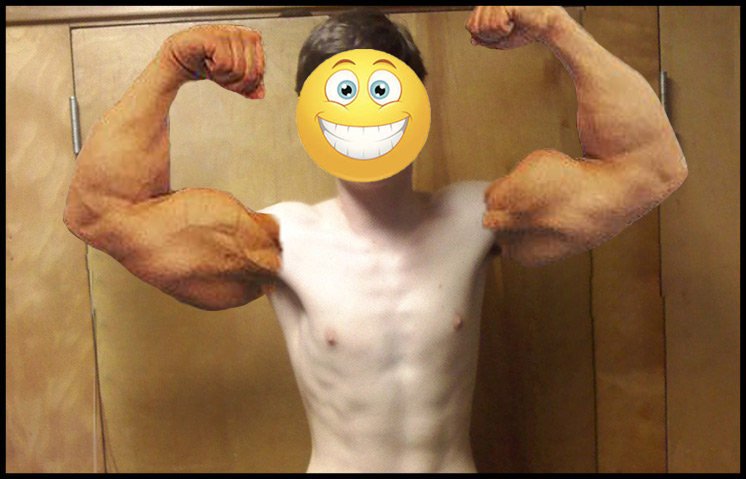
(What do you think about my insanely good photoshop skills btw?)
This type of development is not possible, it’s not how our bodies are meant to work. No, in fact, everything is going to be big on the guy with 18 inch arms, his back, chest, shoulders and everything is well developed:
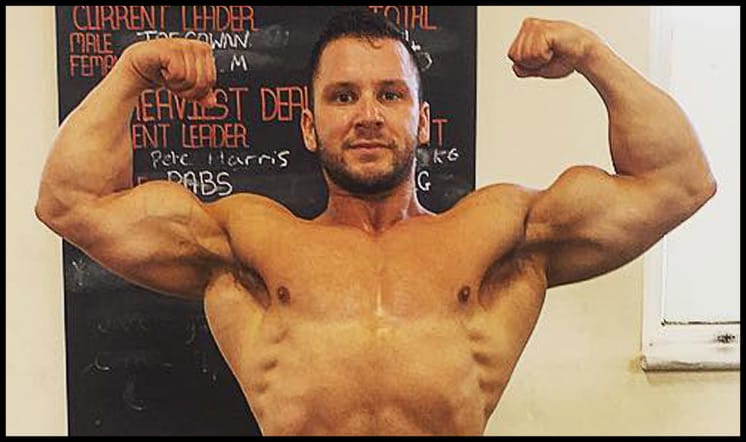
You see, by getting stronger on big compound exercises you can ensure that you develop your whole body.
This would be the problem with exclusively using isolation exercises, because it doesn’t send very strong signals in the body to make everything bigger. And as a result, nothing will get bigger.
So trying to do so would only lead to a waste of time in the gym.
Compound Exercises Must Be Done With Sound Technique
So far we’ve talked about the major benefits of compound lifts, which are that they’re effective and efficient at building your physique. And that’s why we want to use them.
But, one problem associated with a lot of the compound exercises, is that there’s a big skill component to them.
In the beginning of your lifting career you will be tempted to see how heavy you can lift, or try every single exercise that you see. These are both mistakes that you should avoid.
If you want to truly build muscle, then learning how to perform one exercise at a time properly needs to be your priority.
Making sure that technique is on point on one exercise before you start chasing PRs is of utmost importance, for two reasons:
- Effectiveness
- Safety
If you’re not following the advice of learning proper technique on only a few exercises, you will limit both your long-term strength gains and muscle growth, by loading heavy early on with shitty form. This will also lead to very high injury risk further down the line.
So, how do you learn proper technique before you start chasing PR’s?
Well, here’s how:
- Pick only a handful of exercises in your training program, that you can see yourself using for a prolonged period of time.
- Start training with loads that are below what you can actually handle.
- Slowly start adding weight to your exercises without compromising form.
- Within a few weeks to a month, you’ll reach the point where you’re starting to get a great training stimulus, but you’ve also learned to train the movements with correct technique up to this point.
Doing this will also allow you to stay away from strength plateaus, which will allow you to make good progress for a long time to come.
Okay great, you know what to do when it comes to your compound exercises. Now to the question:
Is there going to be a time for isolation exercises at all?
Yes, of course, but they’re not used for the reasons people commonly believe, here’s what I mean:
Isolation Exercises: The Safe Way to Add Extra Training Volume
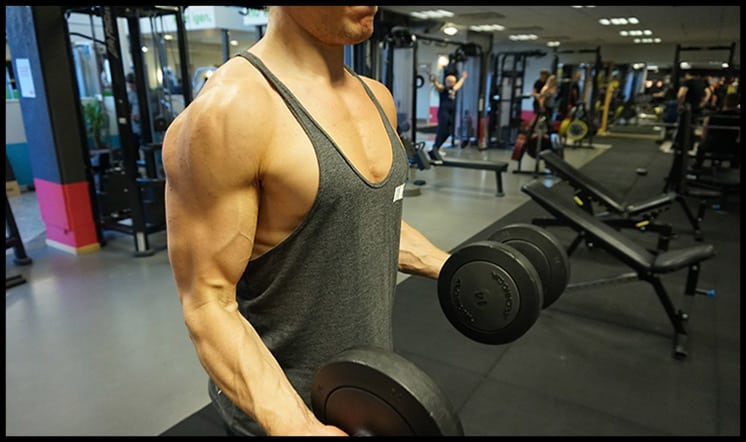
As I wrote earlier, the goal of your exercises it to overload the muscles you intend to train in the most effective, efficient and safe way possible. And this will be mainly covered by doing big compound lifts with good technique.
But, the main reason why we need to use isolation exercises as well, is because there’s one muscle in particular that needs to be isolated in order to be trained. If you don’t isolate it, it will be underdeveloped.
And that’s your medial delts.
If you leave your medial delts underdeveloped, you will lose out on a huge part of what makes up an an aesthetic physique.
The problem with your medial delts is that they’re used in a certain way that doesn’t allow them to get hit effectively by any of your compound lifts, not even overhead presses hit you medial delts well enough.
The only way to effectively train them is when you extend your arms out to the sides, like this:
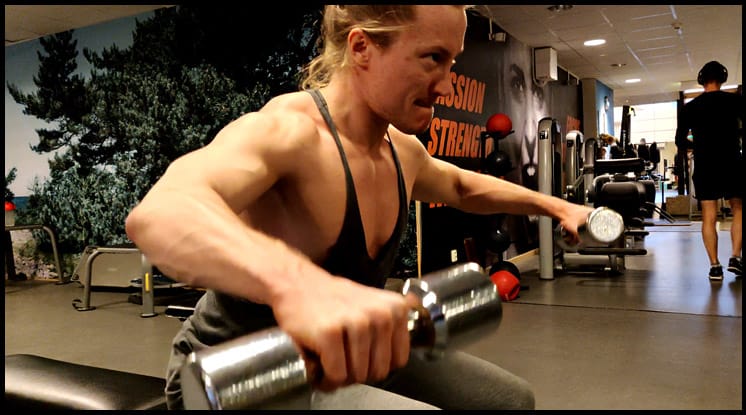
This movement puts your shoulders in a very bad position to lift heavy weights, risking injury. For that reason, you need to use isolation exercises, with lighter weights and higher reps to train your side delts safely and effectively.
Another reason for using isolation exercises would be for certain muscle groups that need a bit more training volume to grow. Typically for most people, this would be biceps and rear delts, which are also huge components of an aesthetic physique.
Most people will get decent bicep and rear delt growth from compound lifts like pull-ups and rows. But to get very well-developed biceps and rear delts, these muscles typically requires a bit more work. Simply because they’re very fatigue resistant.
And if you were to do that extra work with compound lifts, you would risk overtraining other muscles included in the lift, such as the Lats, Romboids and Traps etc.
Another muscle group that should be trained with isolation exercises, are the one people think are made in the kitchen.
Yes, you guessed it, I’m talking about your abs!
Here’s the thing:
Abs are revealed in the kitchen, but just as with any other muscle, they’re built in the gym.
Now, heavy compound lifts will train your abs. But they will mainly train your internal, stabilizing abs, such as your transverse abdominis, and your internal obliques.
To get that six pack to really pop when you’re lean, you must train your rectus abdominis directly, which is done with ab flexion exercises, such as crunches, and leg raises for example.
Myo Reps: The Holy Grail For Isolation Exercises
When it comes to doing isolation exercises I definitely recommend a method called Myo reps. This is a rest-pause method where you take advantage of short rest times to get in a lot of high quality training volume in only one third of the time it would take you with straight sets.
Not only that, Myo reps also leads to incredible muscle pump becuase of the short rest times. Much of this pump sticks around in your muscles for a decent amount of time and will make you appear bigger and more muscular. If you want to learn about Myo reps, then read this guide next.
Okay, so now that you know the difference between compound and isolation exercises, and how they should be used, the next question would be:
How much of your training should be made up with compound lifts and how much should be made up with isolation exercises?
Well, this is largely decided by training experience:
Exercise Selection And Training Experience
Beginners that just start to train should focus mainly on getting stronger on big compound lifts. When you are new to training, your body is open to so much quick growth because there is not much muscle on your frame yet.
And as I covered earlier, by doing compound basics you make sure that your whole body gets developed quickly.
Once you’ve dedicated a few years of chipping away with awesome technique on the big compound lifts, and start to get close to your intermediate stages (2-4 years of training), then you might begin to notice weaknesses in your physique.
That’s the time when you ideally should target those muscle groups, with special isolation exercises, to bring them up to the same standards as the rest of your body.
Here are some quick guidelines on exercise selection and training experience:
- Beginners = train almost exclusively with compound exercises.
- Advanced = train more equally with compound and isolation exercises.
Now, I get it, it might be more enjoyable as a beginner to train with larger variety, including isolation exercises. But if you truly want to build a lot of muscle mass, then using mostly compound lifts will allow growth to happen the fastest, that’s just facts!
With that said though, you can still add some isolation exercises as a beginner, as long as you’re not going overboard with them.
The Best Exercises For Building Muscle:
Okay so what follows now is a list of the exercises that will give you the most bang for your buck when it comes to packing on muscle.
Just remember to pick your exercises when forming a training program based on your training experience and needs that we went through above. Put focus on compound exercises and add in isolation exercises only if needed.
Chest And Tricep
Compound Exercises:
- Barbell bench press
- Barbell incline bench press
- Dumbbell bench press
- Dumbbell incline bench press
- Machine press
Isolation Exercises:
- Cable crossovers
- Dumbbell chest flyes
- Machine chest flyes
- Skullcrushers
- Pushdowns
Back And Biceps
Compound Exercises:
- Pull-ups/Chin-ups
- Pulldowns/Chindowns
- Bent over barbell rows
- Cable rows
Isolation Exercises:
- Rope Straight-Arm Pulldown
- Barbell bicep curls
- Dumbbell bicep curls
- Spider curls
Shoulder And Triceps
Compound Exercises:
- Barbell overhead press
- Dumbbell overhead press
- Machine overhead press
Isolation Exercises:
- Lateral raises
- Rear delt flyes
Legs
Compound Exercises:
- Barbell squats
- Barbell deadlifts
- Barbell lunges
- Bulgarian split squats
- Leg presses
Isolation Exercises:
- Leg extensions
- Hamstring curls
- Hip thrusters
- Calf raises
Abdominals
- Hanging leg/knee raises
- Weighted abdominal crunches
*If you find that your grip is the limiting factor when lifting heavy weights (pull-ups, rows and deadlifts), then I recommend using lifting straps. You can read more about why and how in this post.
What About Bodyweight Exercises?
Bodyweight training can be extremely effective at building muscle if done right. Since building muscle is mainly about doing more work over time, aka progressive overload, bodyweight training is a perfect candidate for packing on muscle.
There are certain bodyweight exercises that only a few people in the world can do well, and these same exercises do put on serious amounts of muscle. Not only that, bodyweight training comes with a host of benefits not possible to get with lifting weights. You can read more about how to get ripped using bodyweight training here.
Conclusion
Okay, so what’s the best exercises for building muscle?
Well, all exercises work, as the main driver of muscle growth is the amount of tension put on the muscles, no matter where this tension comes from.
But, some exercises will create this tension on the muscles more effectively, efficiently and safely than others. And the exercises that accomplishes all of this is compound exercises.
That’s not to say that isolation exercises are useless, they certainly have their place in a well set up training split as well. Using isolation exercises is a great way to work on weaknesses and muscles that can’t be hit effectively with compound lifts.
Remember though that compound lifts should be the bread and butter of a well set up training program, while isolation exercises should fill in the gaps.
Lastly, beginners should focus mostly on compound lifts, as they don’t really have weaknesses yet and no real gaps to fill. They simply need to bring up their entire body first.
What’s Next?
Now, there’s obviously a lot more that goes into creating a good training program than just which exercises you use. In fact, exercise selection makes up like 10 % of the training program when it comes to muscle growth.
If you want to learn more about, not only training, but everything else that goes into building a lean and muscular physique, without giving up on your life in the process. Then make sure you go through my completely free guide; How to Build an Aesthetic Physique that you can read here.
